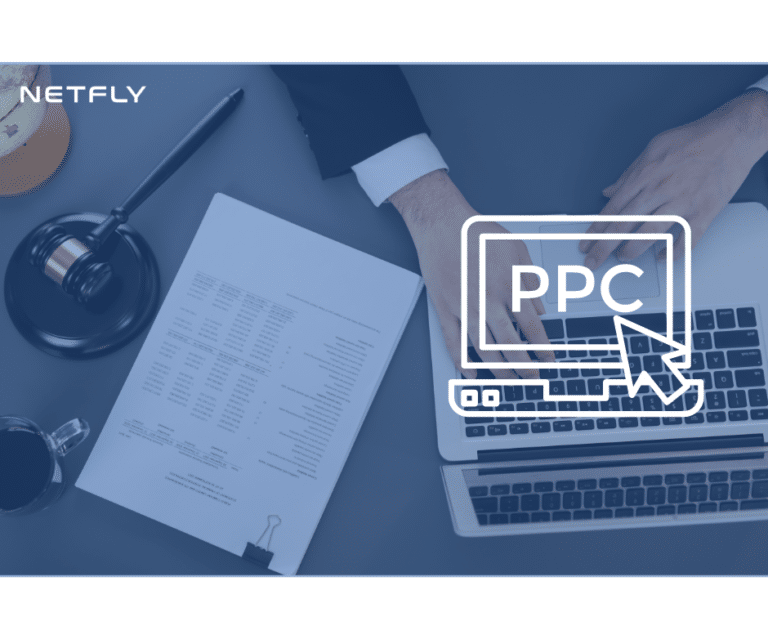Key Takeaways
- Video Marketing is Essential:
In the digital age, video marketing is essential for personal injury law firms to stand out, engage potential clients, and effectively communicate their services. - Understand Your Audience:
Tailoring video content to meet the needs and concerns of personal injury clients can significantly increase engagement and trust in your firm. - Diverse Content Types:
Utilizing a variety of video types, such as educational content, client testimonials, firm overviews, and legal advice snippets, can cater to different viewer preferences and needs. - Quality and Storytelling Matter:
Investing in high-quality video production and focusing on storytelling is vital to creating compelling and professional content that resonates with viewers. - Platform-Specific Strategies:
Different platforms (YouTube, social media, firm’s website) have unique features and audiences, requiring tailored strategies for maximum impact. - SEO and Compliance are Essential:
Optimizing videos for search engines and adhering to legal advertising rules and ethical standards are crucial for the success and integrity of your video marketing strategy. - Leverage Social Media:
Integrating video content into your social media strategy can expand your reach and strengthen your brand’s online presence. - Learn from Success Stories:
Analyzing successful video marketing campaigns from other law firms can provide valuable insights for your own strategy.
Introduction
In the competitive realm of legal services, especially within personal injury law, standing out is not just an option—it’s a necessity. In this digital era, traditional marketing methods are evolving rapidly, and one of the most effective and dynamic strategies emerging is video marketing. This blog post aims to guide personal injury law firm owners on how to effectively leverage video marketing to reach potential clients and engage and inform them in meaningful ways.
Power of Video Marketing for Personal Injury Law Firms
Statistics show that video content significantly impacts viewers, with a remarkable capacity to increase brand awareness and customer engagement. Unlike text or static images, videos offer a unique blend of visuals, sound, and storytelling, creating a powerful tool for emotional connection. For personal injury law firms, this means an opportunity to convey complex legal concepts in an accessible manner and showcase their practice’s human side. Here’s a breakdown of the key components of this power:
Emotional Connection and Trust
Videos enable personal injury law firms to establish a more personal and emotional connection with potential clients. Through storytelling, firms can share client testimonials, case studies, and the personal narratives of the attorneys themselves. This helps build trust, an essential element when individuals choose a lawyer to represent them in life-altering circumstances.
Simplifying Complex Information
Legal concepts and processes can be daunting for the layperson. Video marketing allows law firms to break down complex legal information into digestible, understandable content. By using visuals, animations, and straightforward language, attorneys can make the law more accessible, helping potential clients understand their rights and how the firm can assist them.
Showcasing Expertise and Credibility
Video content provides a platform for personal injury lawyers to demonstrate their expertise and knowledge in the field. Educational content, such as explanations of legal processes or advice on what to do after an injury, positions the firm as an authoritative and reliable source of information. This enhances the firm’s credibility and can influence a potential client’s decision to engage in their services.
Increased Engagement and Visibility
Video content tends to engage and be shared on social media platforms more frequently than content based on text or images. Such enhanced engagement can boost the firm’s visibility, thereby attracting a greater number of prospective clients. Furthermore, video content is favored by search engines, especially when properly optimized, improving the firm’s online presence and search rankings.
Versatility Across Platforms
Content for video marketing can be customized and fine-tuned for diverse platforms, encompassing the firm’s own website, YouTube, and social media platforms such as Facebook, Instagram, and LinkedIn. This versatility ensures that the firm can reach potential clients wherever they spend their time online, maximizing the impact of their marketing efforts.
Developing a Video Marketing Strategy for Personal Injury Law Firms
Developing a video marketing strategy for personal injury law firms is a crucial step towards leveraging the unique benefits of video content to attract, engage, and convert potential clients. This process involves several key stages, each designed to ensure the content not only reaches the intended audience but also resonates with them on a personal level, thereby enhancing the firm’s brand and driving client acquisition. Here’s a strategic framework for creating a successful video marketing campaign:
Define Your Objectives
Start by clearly defining of your goals for video marketing. These goals may include enhancing brand recognition, fostering trust among prospective clients, informing the public about personal injury law, or generating new leads. Having clear goals will guide the content creation process and help in measuring success.
Know Your Audience
Understanding your target audience is critical. For personal injury law firms, the audience typically includes individuals who have suffered an injury due to someone else’s negligence and are seeking legal assistance. Consider the concerns, questions, and information needs of this group. Tailoring your video content to address these aspects will make your messaging more effective.
Plan Your Content
Based on your objectives and audience insights, plan a variety of video types. Educational videos can help demystify legal processes, FAQ videos can address common concerns, client testimonials can build trust, and behind-the-scenes glimpses of the firm can humanize your team. Each video type should align with your overall strategy and contribute to achieving your objectives.
Invest in Quality Production
While the authenticity of the message is paramount, the quality of the video also matters. High-quality production, including clear visuals and audio, can significantly impact how your firm is perceived. Consider hiring professionals for filming and editing to ensure your videos meet a high standard of professionalism.
Optimize for Platforms
Each platform where you intend to share your video content has its own set of best practices. For example, videos on Instagram and TikTok may need to be shorter and more engaging right from the first second, whereas content on YouTube can be longer and more in-depth.
Optimize your videos accordingly, including platform-specific aspects like hashtags, titles, and descriptions.
Focus on Storytelling
In video marketing, the art of storytelling holds significant sway. Narratives that involve real people, emotions, and successful outcomes can captivate viewers. Share stories of how your firm has helped clients in the past, focusing on the human aspect and emotional journey, not just the legal process.
Implement SEO and Analytics
Optimizing videos for search engines requires the strategic incorporation of appropriate keywords in your video titles, descriptions, and tags to enhance their search visibility. Moreover, employing analytics tools to monitor your videos’ performance on various platforms is crucial. This information offers valuable insights into the viewers’ interactions, preferences, and levels of engagement, enabling you to continuously refine and improve your strategy.
Ensure Compliance and Ethical Standards
Adhere to legal advertising standards and maintain high ethical standards in your video content. This includes being transparent, respecting client confidentiality, and avoiding misleading claims. Compliance not only protects your firm legally but also builds trust with your audience.
Promote and Share Your Videos
More than simply simply creating videos is required; promotion is key to ensuring they are seen by your target audience. Share your videos across your firm’s social media channels, website, and email newsletters. Consider paid advertising to boost visibility, especially for key pieces of content.
Evaluate and Adapt
Finally, continually evaluate the performance of your video marketing strategy against your initial objectives. Use analytics to understand what’s working and what isn’t, and be prepared to adapt your approach based on feedback and performance data. This iterative process will help you refine your video marketing efforts and achieve better results over time.
Developing a comprehensive video marketing strategy is essential for personal injury law firms looking to stand out in a competitive digital landscape. By focusing on quality content that resonates with your audience, optimizing for different platforms, and adhering to ethical standards, your firm can effectively use video to connect with potential clients and grow your practice.
Types of Videos for Personal Injury Law Firms
For personal injury law firms looking to leverage video marketing, diversifying the types of videos produced can significantly enhance engagement and reach. Each video type serves a specific purpose, from educating the audience to showcasing the firm’s success stories. Here are key types of videos that personal injury law firms should consider incorporating into their marketing strategy:
1. Educational Videos
These videos focus on providing valuable information to the audience. Topics might include explanations of legal terms, overviews of the personal injury claim process, or advice on what steps to take after an accident. Educational videos position the firm as a helpful and knowledgeable authority in personal injury law.
2. Client Testimonials
Testimonials from past clients are incredibly powerful, offering real-life stories of how the firm has helped individuals in their time of need. These videos build trust and credibility, showing potential clients the compassionate and effective representation they can expect.
3. Firm Overview Videos
An overview video introduces the firm, its mission, values, and team members. This type of video helps humanize the firm, allowing potential clients to see the faces behind the name and feel more connected and comfortable reaching out for help.
4. Case Study Videos
Similar to client testimonials, case study videos go a step further by detailing specific cases the firm has handled, showcasing the strategies used and the outcomes achieved. These videos can demonstrate the firm’s expertise and success in navigating complex legal challenges.
5. Legal Advice Snippets
Short videos that offer quick legal tips or advice can be highly engaging, especially on social media platforms. These snippets can address common questions or misconceptions about personal injury law, providing clear and concise information to viewers.
6. Q&A Sessions
Hosting Q&A sessions, whether live or pre-recorded, allows the firm to interact directly with its audience, addressing their questions and concerns in real-time. This format can enhance engagement and provide valuable insights into the topics that are most important to potential clients.
7. Behind-the-Scenes Videos
Showing behind-the-scenes footage of the firm at work can offer a glimpse into the day-to-day operations and the dedication of the team. These videos can strengthen the connection with potential clients by showcasing the firm’s work ethic and commitment to justice.
8. Community Involvement Videos
Videos that highlight the firm’s involvement in community service or charitable activities can enhance its reputation and appeal. Demonstrating a commitment to giving back can resonate with viewers and differentiate the firm from competitors.
9. Legal Updates and News Commentary
Commenting on recent legal changes, high-profile cases, or news events related to personal injury law can position the firm as a current and informed source of insight. These videos can help keep the audience engaged and informed about relevant legal developments.
10. Animated Explainer Videos
For complex legal concepts or processes, animated videos can be an effective way to simplify and explain. Animation can make daunting topics more accessible and engaging for a wider audience.
Incorporating a mix of these video types into a personal injury law firm’s marketing strategy can cater to different viewer preferences, enhance engagement, and cover various aspects of the firm’s expertise and services. By strategically producing and sharing these videos, personal injury law firms can significantly boost their visibility, credibility, and client engagement.
Best Practices for Creating Engaging Legal Videos
Creating engaging legal videos requires a blend of storytelling, quality production, and strategic messaging. For personal injury law firms, these videos are about showcasing services and connecting with potential clients on a personal level, educating them, and building trust. Here are best practices to ensure your legal videos effectively engage your audience and support your marketing goals:
1. Focus on Storytelling
Human stories resonate deeply with viewers. Center your videos around real-life scenarios, client testimonials, or hypothetical situations that illustrate the impact of personal injuries and how your firm can help. A compelling narrative engages viewers emotionally, making your message more memorable.
2. Maintain High Production Quality
Video quality reflects on your firm’s professionalism. Invest in good lighting, clear audio, and stable footage to make your videos appear professional. High production value increases credibility and viewer engagement. Consider hiring professional videographers or editors if needed.
3. Keep It Concise and Focused
Attention spans are short, especially online. Online audiences have limited attention. Be clear, concise, and deliver your message efficiently. A concise, focused video is more likely to retain viewers’ attention from start to finish. Clearly define the purpose of each video and stick to the main message without adding unnecessary information.
4. Educate Your Audience
Provide value through your content by educating viewers on legal processes, rights, and important steps to take after a personal injury. Informative content positions your firm as a knowledgeable authority and can help viewers feel empowered to take action.
5. Use Clear and Accessible Language
Avoid legal jargon that may confuse or alienate your audience. Use simple, clear language to ensure your videos are accessible and understandable to everyone, regardless of their legal knowledge.
6. Incorporate Visuals and Graphics
Enhance your videos with relevant visuals, graphics, and animations to help explain complex legal concepts or to add interest to your content. Visual aids can make information easier to understand and more engaging.
7. Include a Call to Action
Every video should have a clear call to action (CTA), guiding viewers on what to do next, whether it’s contacting your firm, visiting your website, or watching another video. A strong CTA can convert viewer interest into actionable steps.
8. Optimize for Search and Social Media
Supercharge your video’s SEO by strategically incorporating relevant keywords in titles, descriptions, and tags. Tailor your content and format for different social media platforms to maximize reach and engagement. Remember, what works on YouTube might differ from what’s effective on Facebook or Instagram.
9. Monitor and Respond to Engagement
Engage with your audience by monitoring comments and responding appropriately. Interaction can build a community around your content and encourage further engagement from viewers.
10. Test and Learn from Analytics
Use analytics to track the performance of your videos across platforms. Analyze viewer behavior, engagement rates, and conversion metrics to understand what works best. Utilize these findings to optimize your video approach over time.
Conclusion
Video marketing offers a multifaceted approach to connect with potential clients and build your firm’s brand. By harnessing the power of video, personal injury law firms can effectively communicate their expertise, compassion, and commitment to justice. Now is the time to start or enhance your video marketing efforts.
Begin your journey into video marketing today. Utilize the insights and strategies discussed in this post to create compelling, informative, and engaging content that resonates with your audience. For further resources or assistance, don’t hesitate to reach out for professional consultation or explore available video marketing tools and services.
FAQ
Q: Why is video marketing important for personal injury law firms?
A: Video marketing is important as it allows law firms to explain complex legal concepts in an accessible way, showcase their expertise, and connect emotionally with potential clients. It’s a powerful tool for building trust and credibility in a competitive market.
Q: What types of videos are most effective for personal injury law firms?
A: The most effective types include educational content, client testimonials, firm overviews, legal advice snippets, and videos showing community involvement. Each type serves a different purpose, from educating clients to building trust and showcasing expertise.
Q: How can law firms ensure their video content is engaging?
A: To ensure engagement, firms should focus on high-quality production, clear and compelling storytelling, and maintaining a balance of professionalism and relatability. Videos should be informative, concise, and include a clear call-to-action.
Q: What are the key considerations for SEO in video marketing?
A: Key SEO considerations include using relevant keywords, optimizing video titles and descriptions, and creating engaging thumbnails. It’s also important to track video performance using analytics to understand viewer behavior and refine future content.
Q: Are there any legal or ethical concerns with video marketing for law firms?
A: Yes, law firms must adhere to legal advertising rules, which vary by jurisdiction. Ethical concerns include ensuring the accuracy of information, respecting client confidentiality, and avoiding misleading content. Compliance with these standards is crucial to maintain the firm’s integrity and reputation.










